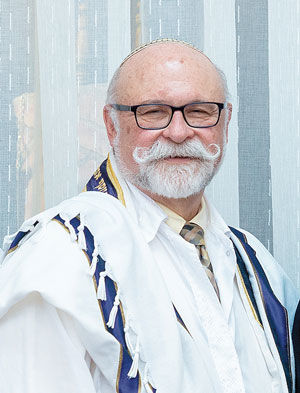Hearing, not only seeing, is believing
Published May 27, 2021
After my transfer to a new elementary school in the fourth grade, I was offered the opportunity to play a musical instrument. Music had always been a huge part of my life, whether in synagogue, which I attended each Shabbat morning with my grandfather, or at home, where my mother played the radio throughout the day.
While my mother suggested the cello, I chose the trumpet, as my father had said that if his family could have afforded it, he would have played the trumpet. So, at the age of 9 years old, my parents bought me a brand new Olds Ambassador trumpet.
By the eighth grade, I had traded that student horn and some hard-earned cash from mowing lawns for a beautiful King Super 80 with a silver bell, which I have continued to play through my first year of college and, of late, in bands in Chattanooga, Tenn., and in St. Louis.
In this week’s Torah portion, Beha`alotcha, immediately after learning that the Divine Presence would symbolically appear as a cloud by day and a pillar of fire by night hovering over the mishkan, the Tabernacle, Moses is instructed to have two silver trumpets fashioned for the purpose of communication with the people. These rudimentary instruments were to be hammered out of silver, and the number of trumpets employed and the duration of the blasts would supplement the instructions to the people at large and/or the leaders also provided by the cloud/pillar of fire.
The question, of course, is why was this backup system to be implemented? As they wandered the wilderness, were not the cloud and the pillar of fire clearly visible to each and every member of the Israelite contingents?

In his brilliant book simply titled “The Torah,” the late Rabbi Gunther Plaut commented on this very question. His insight is worth quoting:
“The cloud was a visual, the trumpets an auditive reminder of God’s presence. Somehow, Jewish instinct never quite trusted the witness of the eyes. … At Sinai, the emphasis was not so much on what the people saw but, more importantly, on what they heard. The true key word of Judaism is not re-eh(see) but shema (hear) (page 1086).
Missouri may be the Show Me State, but for Israel, it was all about the words and the sounds. Our eyes can be fooled, but not our ears. The Shema is a passage that is central to Jewish prayer in the morning and in the evening, and the verb itself connotes not only hearing but understanding.
Magicians or, better, illusionists constitute a profession based on the fact that people cannot always trust what they see. The most rudimentary of tricks are optical illusions meant to divert the eyes’ attention from what is happening. There is an entire genre of art that plays upon this vulnerability of eyesight from the work of Escher to those memes on social media in which pictures or words appear to be one thing and then another.
The trumpet has evolved over the millennia since it was employed by our ancestors, but the importance of music, words and sounds has remained the same. Whether it is the delicate music of the Baroque era, the joyful sounds of swing and jazz or simply the clarion calls of the bugle, the trumpet reminds us all to listen, to hear and to respond emotionally, physically and spiritually.
“Shema Yisra’el, Hear, O Israel … with all your heart, with all your soul and with all your might.”
Shabbat Shalom!
Rabbi Josef Davidson serves Congregation B’nai Amoona and is a member of the St. Louis Rabbinical and Cantorial Association, which coordinates the weekly d’var Torah for the Jewish Light.














